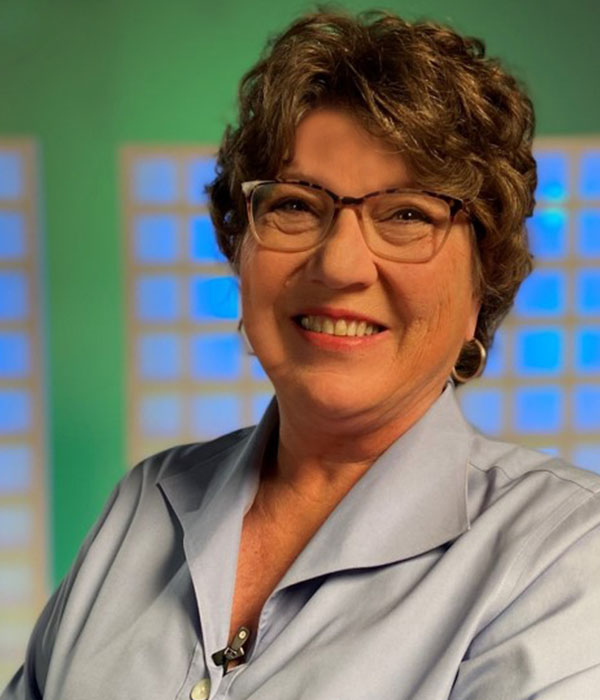
On-Demand
Package 1
$687
Earn 39 CME Credit Hours (Rx=12.25) on your time with this engaging new package of 2022 courses! Learn about spotting a heart attack, new dermatology drugs, diabetes, pediatric ortho, contraception use across the lifespan, and more. Features 8 tracks, 8 presenters, and our new enhanced viewing platform.
Course Overview For Package 1
- Cardiology &
Emergency Medicine - Dermatology
- Diabetes
- Emergency Room
- Mental Health
- Orthopedics
- Pain Management
- Women’s Health

Classes by Leslie Davis, PhD, RN, ANP-BC, FAANP, FACC, FAHA, FPCNA
Spot That Rhythm: 12 Lead ECG Interpretation (Part 1)
In this session, you will learn how the frontal, augmented, and chest (V) leads of the ECG align with the images on the printed copy of the 12 lead ECG. You will learn which two leads are the most useful to determine rate and rhythm. By the end of the first session, you will be a pro at on-the-spot interpretation of the underlying heart rate and rhythm.
Turned to the Side, Slower, Wider, What’s Wrong: 12 Lead ECG Interpretation (Part 2)
In this session, you will learn what axis means, including likely causes and significance of an axis deviation, if present. You will use the “eyeball test” as one of the three ways to determine if left ventricular hypertrophy is present on a 12 lead ECG. In addition, you will get hands-on practice using a systematic approach to determine the difference between right versus left bundle branch blocks in ECGs with wide QRS waves.
Spot that Heart Attack: 12 Lead ECG Case Studies
This session will utilize a systematic approach for recognizing acute ischemia, acute injury, and infarction in cases studies of 12 lead ECGs. You will get hands-on practice in interpreting case studies to apply the knowledge gained. After this session, you will recognize acute ischemia like a pro
Stop the Stroke, Prevent the Bleed in Patients with Atrial Fibrillation (Rx=1.0)
In this session, you will utilize evidence-based risk stratification scoring tools to determine whether your patient with atrial fibrillation needs chronic anticoagulation to prevent stroke while considering the likelihood of bleeding. We will compare newer versus traditional anticoagulation options to stroke prevention, even for those with chronic kidney disease. The discussion will conclude with reviewing a systematic approach to managing bleeding, including using newly approved reversal agents, as appropriate, in patients on chronic anticoagulation.
Ref and Pef: The Not So Identical Twins of Heart Failure (Rx=1.25)
The treatment of heart failure (HF) patients has become very complex, including figuring out how to optimize guideline-directed medical therapy for patients with HF with reduced ejection fraction and HF with preserved ejection fraction. This session will cover the latest treatment guidelines for treating adults with both types of HF. We will review how to start and titrate optimal medical therapy, including traditional baseline therapy and two new classes of medications. You will learn strategies for overcoming barriers to medication titration from an expert in the field, including which circumstances would trigger a referral to a HF specialist. Templates for conducting phone visits (within 72 hours) and clinic visits(within 7-10 days) for those hospitalized for HF will be shared for immediate use in your clinical practice. Patient education resources and a user-friendly app for health care providers will also be shared.

Classes by Lakshi Aldredge, MSN, ANP-BC, DCNP
Approach to the Patient with Cutaneous Disorders
Does your heart sink when you see a patient on your schedule with the dreaded “skin rash”? Then this session is for you! We will provide a fun and interactive, case-based overview of approaching the patient with a skin complaint. We will review common dermatologic nomenclature, what clues to look for to help nail the diagnosis and provide important tips on managing and educating your patients. This is the “fundamentals in dermatology” session that we all wish we had in our clinical, educational programs!
Overview of Papulosquamous Disorders
This session will provide an engaging overview of the most common skin conditions seen in dermatology, including atopic dermatitis, psoriasis, contact dermatitis, and all those under red itchy rashes and bumps! You’ll have fun viewing many skin condition images and identifying clinical features to help distinguish one skin rash from another. We will also be providing the latest evidence-based guidelines on common conditions so you will be fully updated and “in the know”!
Infectious Disorders of the Skin (Rx=0.50)
This session will provide you with a comprehensive overview on the management of common bacterial, viral and fungal cutaneous conditions from Impetigo to Lyme Disease. Wondering if you need to do a biopsy or send a tissue culture or bacteria swab? We’ll provide you with the latest updates on the most appropriate tests to obtain the correct diagnosis. We will also be updating you on the latest information on the cutaneous manifestations of the COVID-19 virus and treatment management.
What’s New in the Dermatology Drug Cupboard? (Rx=0.75)
Confounded by that pesky skin rash? What to do with that skin infection? This session will give you the most up-to-date, evidence-based guidelines for the treatment of common skin conditions. We will review therapeutic classes of topical and systemic medications, treatment parameters, monitoring guidelines, and patient teaching pearls. You’ll leave this session feeling confident and prepared to treat the most challenging dermatologic conditions.
Diagnostic Dilemmas in Dermatology (Rx=0.25)
Put your knowledge to practice in this fun and interactive case-based session. We will present some common and not-so-common clinical cases of dermatological dilemmas and help you come up with the best answer. Grab your Sherlock Holmes hat and magnifying glass and prepare to be pleasantly puzzled!

Classes by Debbie Hinnen, APN, BC-ADM, CDCES, FAAN, FADCES
DIY Diabetes (Part 1)
Do not let Diabetes overwhelm you. If you understand the metabolic defects and how medications address those problems, you are well on the way to Doing It Yourself. Do you ever need to refer to a diabetes specialist? Of course. For comprehensive diabetes self-management education and medical nutrition therapy for EVERY patient; at diagnosis, annually and when major medication and life changes occur. Can you manage their medication therapy? Yes! This workshop will help you be pro-active with diagnosis, medication management, therapy intensification, 5-minute nutrition counseling, dealing with barriers your patients with T2DM struggle with, and when to refer to the diabetes specialist.
DIY Diabetes (Part 2) (Rx=1.50)
Do not let Diabetes overwhelm you. If you understand the metabolic defects and how medications address those problems, you are well on the way to Doing It Yourself. Do you ever need to refer to a diabetes specialist? Of course. For comprehensive diabetes self-management education and medical nutrition therapy for EVERY patient; at diagnosis, annually and when major medication and life changes occur. Can you manage their medication therapy? Yes! This workshop will help you be pro-active with diagnosis, medication management, therapy intensification, 5-minute nutrition counseling, dealing with barriers your patients with T2DM struggle with, and when to refer to the diabetes specialist.

Classes by Melissa Kalensky, DNP, FNP-BC, CNE
Making Your “What Can Kill” List & Identifying That “Needle in a Haystack”
We often see the same complaints over and over again yet, less than 10% of those cases are triaged as requiring immediate or emergent intervention upon arrival to the emergency room. This presentation will look at some of the most common clinical complaints – abdominal pain, chest pain, fever, cough, and headache – focusing on quickly identifying “red flags” that require expedient workup. We will focus on elements of the history/physical exam that can help you consider how to triage these patients and work through some cases involving common complaints that end up as clinical zebras.
Abdominal & Pelvic Pain- From Cholecystitis to Cervicitis, to Calculi, Oh My! (Rx=0.25)
This presentation will focus on the nearly 1 in 10 patients presenting to the emergency department who have a complaint of abdominal and/or pelvic pain for less than seven days. We will discuss elements of the history and physical exam that are essential in building a broad differential, including atypical presentations. We will review considerations in ordering the most appropriate laboratory and imaging studies to narrow this differential and rule out life-threatening pathology. Particular considerations for changes in pathology with age, acute pain in pregnancy, and pain accompanied by vaginal bleeding will be highlighted as well.

Classes by Josh Hamilton, DNP, RN-BC, FNP-C, PMHNP-BC, CTMH, CNE, FAANP
Safe Prescribing in the Era of Prescription Drug Abuse (Rx=1.0)
This presentation will focus on the class of anxiolytics known as benzodiazepines. Over the years, prescribers have had a love/hate relationship with these controlled substances. Upon completion of this presentation, participants will learn the benefits and risks related to the safe prescribing of benzodiazepines for individuals with various symptom presentations. The presentation will address the risks and cautions related to the prescribing of benzodiazepines with various medications, including opioids and stimulants, and in different healthcare settings. Participants will also receive tips from identifying the warning signs of benzodiazepine abuse and techniques to safely taper and discontinue these medications to minimize withdrawal discomfort.
Keeping it Simple: The Power of Brief Therapeutic Interventions
Compelling evidence suggests that both medications and therapeutic interventions are effective in the treatment of psychiatric disorders. The current “state of the science” involves multiple modalities to produce better outcomes than those observed using either psychopharmacology or therapy alone. Clinicians in all settings need to understand how various therapeutic interventions can profoundly influence clients’ ability to cope and change. Using the unifying framework developed by Hubble, Duncan, and Miller, we examine the four common elements that account for much of the improvement seen in clients, regardless of the approach taken. These constructs are applied to various simple, brief approaches that are easily enacted – and easily adapted – to any patient encounter.

CME Courses by Gerald Weniger, PhD, ATC, PA-C
Not Just Child’s Play: A Review of Pediatric Orthopedics
Most clinicians are familiar with common pediatric injuries. But are you still confused by the Salter-Harris classification? Do you remember the differences between a slipped capital femoral epiphysis and Legg-Calve-Perthes disease? This presentation will review these pediatric musculoskeletal conditions as well as osteochondritis dissecans, apophysitis, various fracture patterns, and more.
Don’t Shoulder the Burden: Demystifying Physical Exam of the Shoulder
Many clinicians are comfortable with the evaluation of musculoskeletal conditions of the hand, wrist, foot, or ankle. But for some reason, evaluation of shoulder pain is often more daunting. SLAP tears? Hawkins-Kennedy Test? Bankart tears? O’Brien’s Test? This presentation will help you make sense of all the orthopedic acronyms and eponyms so that you can more confidently evaluate a patient with shoulder pain. Useful special tests will be explained and demonstrated.
We’ll Give You a Hand: Wrist & Hand Pathologies You May Be Missing
Most clinicians are familiar with the evaluation and treatment of common hand and wrist conditions like carpal tunnel syndrome, wrist sprains, and trigger finger. But what about more obscure pathologies? This presentation will review less common musculoskeletal conditions of the hand and wrist such as Keinbock’s disease, mallet finger, Jersey finger, skier’s thumb, scaphoid fractures, and more.
Keys to the Knee: Simplifying Evaluation of the Knee
Evaluation of the knee has changed and evolved over the years. Do you perform a Lachman’s test or anterior drawer? Is McMurray’s test still clinically useful? What is a Thessaly test? This presentation will discuss these special tests and more; while making sense of a musculoskeletal exam of the knee. Special attention will be directed towards acute and degenerative meniscus tears, and when referral to orthopedics is prudent.
Get a Leg Up on Musculoskeletal Pharmacology (Rx=0.50)
Are you running out of options for treating joint and muscle pain? Have NSAIDS and acetaminophen stopped working? Ready to lessen your use of opioids? This presentation will review alternative medications for MSK pain. It will also provide an introduction to joint injections such as hyaluronic acid injections, platelet-rich plasma therapy, and other emerging procedures.

Classes by Brett Snodgrass, FNP-C, CPE, ACHPN, FAANP
Pain Treatment in the Opioid Epidemic: Opioids, Non-opioids, and Complementary Therapies (Part 1)
The opioid epidemic has raised many questions for the health care provider. It can be frustrating and difficult to care for patients in pain. What do you do with pain patients? How can you use opioids, and when? What other options are available? This session will look at the true opioid epidemic while putting things in perspective. We will focus on how to provide appropriate treatment for a patient in pain using opioids, non-opioids, and complementary therapies.
Pain Treatment in the Opioid Epidemic: Opioids, Non-opioids, and Complementary Therapies (Part 2) (Rx=1.5)
The opioid epidemic has raised many questions for the health care provider. It can be frustrating and difficult to care for patients in pain. What do you do with pain patients? How can you use opioids, and when? What other options are available? This session will look at the true opioid epidemic while putting things in perspective. We will focus on how to provide appropriate treatment for a patient in pain using opioids, non-opioids, and complementary therapies.

Classes by Nisha McKenzie, PA-C, CSC, NCMP, IF
LARCs: Use of Contraception Across the Lifespan (Rx=0.50)
What are some of the reasons we might start a patient on hormonal contraception? How and when in the month should they start? And what are some of the reasons you might NOT begin them? This talk will walk you through the long-acting reversible contraceptive options, risks, benefits, and efficacy, as well as placement and removal techniques. We’ll go through case studies with twists and turns representative of what we see in real life.
LGBTQIA+ Informed Health Care: Making Sense of the Letters
This discussion will offer a healthy foundation and increase familiarity with providing informed, non-biased healthcare to members of the LGBTQIA+ community. We will work through language as it applies to the LGBTQIA+ community and the additional risks and apprehensions members of this community face in relation to healthcare.
The “S” Word: Demystifying Female Sexual Health (Rx=0.50)
Female sexual health is given very little time within medical training. Here we will discuss the science behind female sexuality and address the fact that it is not merely a light version of male sexuality. For decades women have asked their medical providers to “clean out the cobwebs” while doing pelvic exams. This cry for help often remains unanswered due to, well due to so many factors – lack of time, lack of training, lack of available resources, discomfort, or bias within the topic of sexuality. Let’s debunk some of the myths. Open and transparent talk about female sexuality and how we can address this to help our patients within our daily practice.
V is for Vagina, Vestibule, Vulva – And All Things Amazing (Rx=0.50)
Often the vulva, vestibule, and vagina serve simply as a conduit to get to that cervix and screen for cancer. We are going to take a pause at these important layers discussing dermatologic disorders, vulvar and vestibular pain disorders, and recurrent vaginal infections. We will go through recognition, evaluation, and treatment of all disorders of the V!
From Menstrual Disorders to Menopause (Rx=0.25)
The span of time between menarche and menopause can be fraught with complications, from no bleeding to irregular bleeding, to heavy bleeding and all things between. PCOS, Endometriosis, Primary Ovarian Insufficiency, and PMS/PMDD are just a few of the things we will cover. Learn how to recognize and treat some of the most common menstrual disorders, as well as how to address some of the most common symptoms people endure as they approach and walk-through menopause.